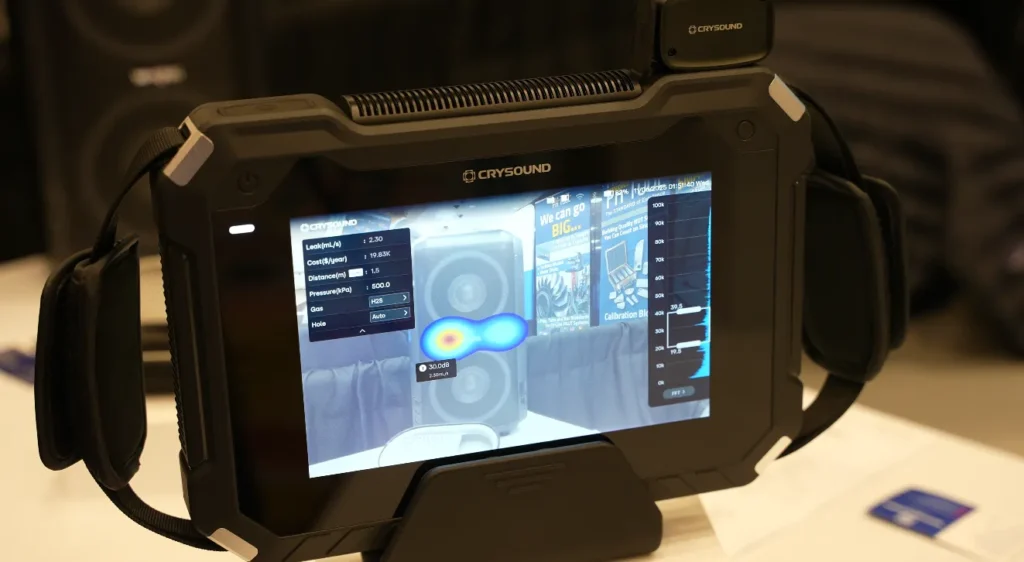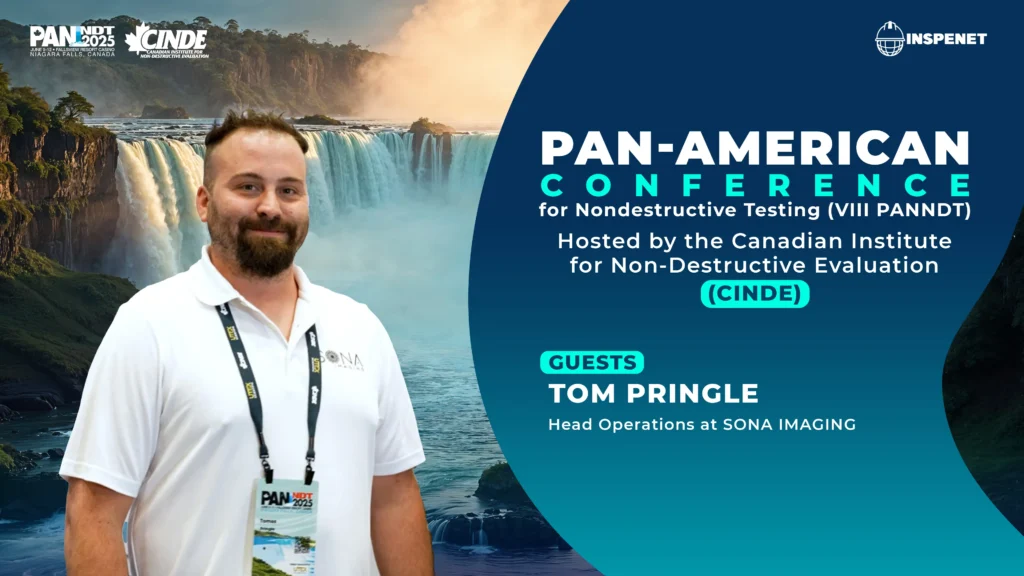Acoustic inspection and aerial technology: the new bet of Sona Imaging
Tom Pringle, Chief Operating Officer of Sona Imaging Inc. presented at the PANNDT conference a disruptive approach to the world of non-destructive inspection, acoustic inspection technology applied both from the ground and from the air, with the objective of locating and quantifying leaks in high-risk environments such as refineries, power plants and gas plants.
The basis of this type of inspection is the use of acoustic signal triangulation to identify positive or negative pressure leaks; this includes gases such as H2S, helium, hydrogen and steam, which normally require extremely risky face-to-face inspections. With this technology, a leak can be detected from up to 182 meters away, eliminating the need to approach the point of risk.
Aerial inspection: Technology that saves lives
One of Sona Imaging's most striking developments is its world-exclusive aerial platform, which consists of a system of drones equipped with an acoustic sensor, designed to perform inspections of power transmission lines. This technology replaces traditional methods involving helicopter descents or high altitude work, which is not only costly, but extremely dangerous.
At the technical level, the aerial system integrates an acoustic capture unit optimized for flight conditions, stabilized on an industrial drone that can operate in extreme environments, capable of traveling along kilometers of power lines, capturing high-fidelity acoustic data that is then analyzed to detect leaks, electrical arcing or connector faults.
The result is a solution that replaces high-risk operations with autonomous or semi-autonomous flights that can be performed by a single operator from the ground. The inspection is done non-intrusively and without interrupting electrical service, which translates into operational efficiency and total safety.

Beyond Distribution: On-site Services and Analysis
The company not only distributes CrySound technology in Canada, but also offers complete inspection and analysis services, focusing its efforts especially in the oil & gas sector, where awareness of acoustic inspection is still low, but the potential for adoption is high.
We are discovering that this is a fairly new technology. It's been around for a while, but it hasn't found its heyday until recently. So our goal is to spread awareness of it, and so far we are seeing a lot of uptake in the oil and gas sector.
Tom Pringle.
The short-term goal is to arrange field demonstrations and offer ongoing service contracts, which will allow operators to identify invisible leaks before they become safety or environmental threats.
Looking ahead: AI and expansion
One of the emerging topics that Sona Imaging is exploring is the integration of artificial intelligence to speed up analysis times and reduce the need for human interpretation. Although the current system already has analysis algorithms, the next step is to automate more processes so that even a junior technician can take snapshots and send them for automatic evaluation.
Tom mentioned that they have been in discussions with other developers at the show, and that they look forward to the possibility of creating their own AI analysis platform, a step that would place them as a pioneer in the use of AI-supported acoustic inspection.
Real prevention: field examples
Although Tom preferred not to name specific installations, he shared cases where acoustic inspection has prevented serious accidents. In one case, they were able to identify a hydrogen sulfide leak that, if detected by traditional methods, would have endangered the life of the technician in charge and thanks to the use of their equipment, it was possible to locate the leak without human risk, allowing it to be contained before generating an explosion.
This kind of preventive maintenance, I mean, when you have people walking around with soap and a spray bottle looking for a hydrogen disulfide leak, this can be done from 600 feet away, locate it, quantify it, figure out how to get it out with a valve, prevent an explosion and life saved is really the most important thing.
Tom Pringle.
This type of predictive and remote maintenance and remote maintenance not only prevents fatalities, it also saves millions in plant shutdowns, environmental litigation and structural damage.
Security, technology and proximity
Sona Imaging is positioning itself as a benchmark in acoustic inspection technology by combining solution distribution with highly specialized field services. Its proposal is based on protecting human lives through the intelligent application of technology, optimizing the early detection of leaks and defects.
The company is not only ready to respond, but also to take the initiative and approach operators who are looking for safe, cost-effective and efficient solutions.
For more content on PANNDT 2025, visit our YouTube channel and our LinkedIn profile.
Source: Inspenet.

